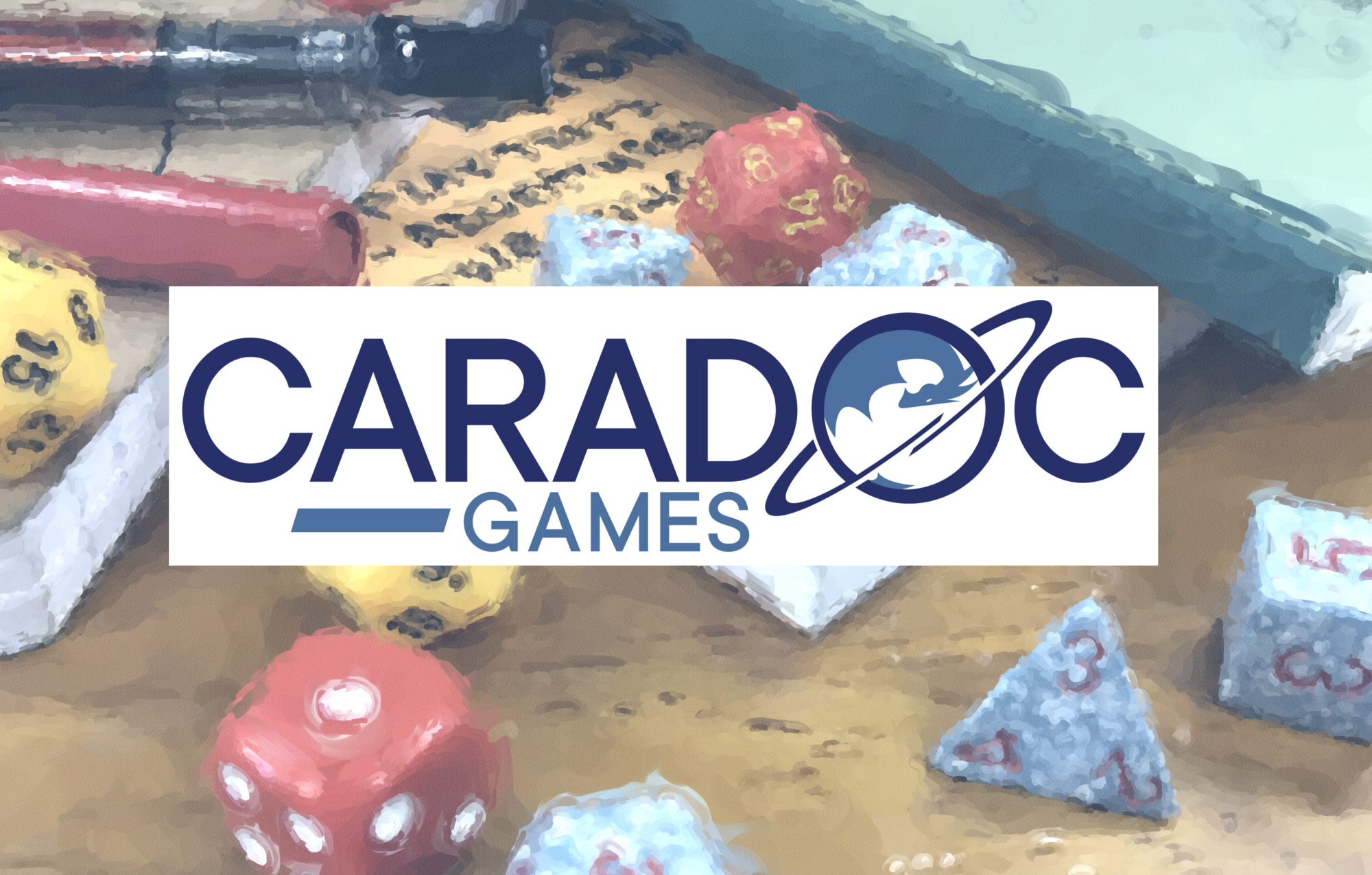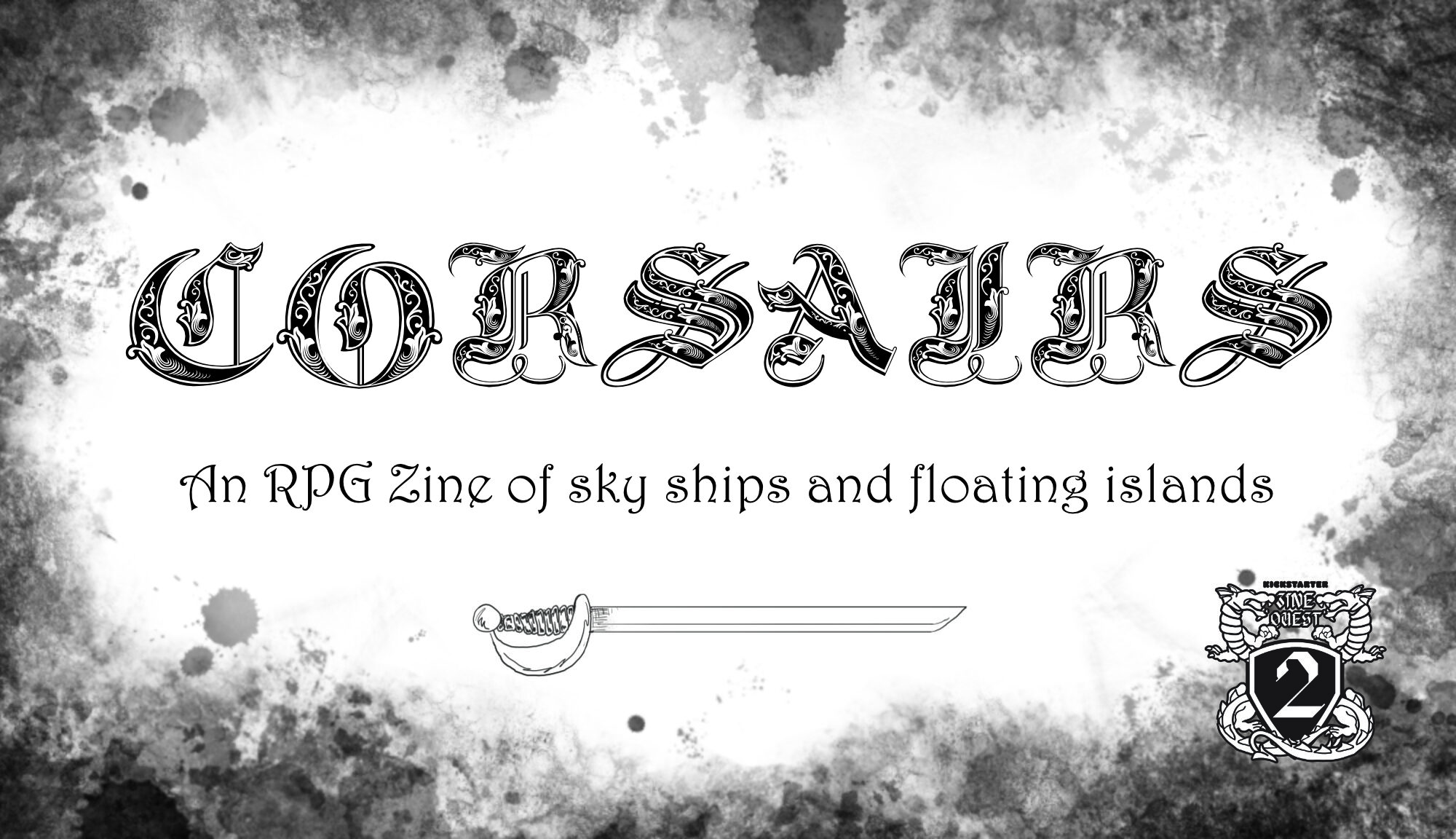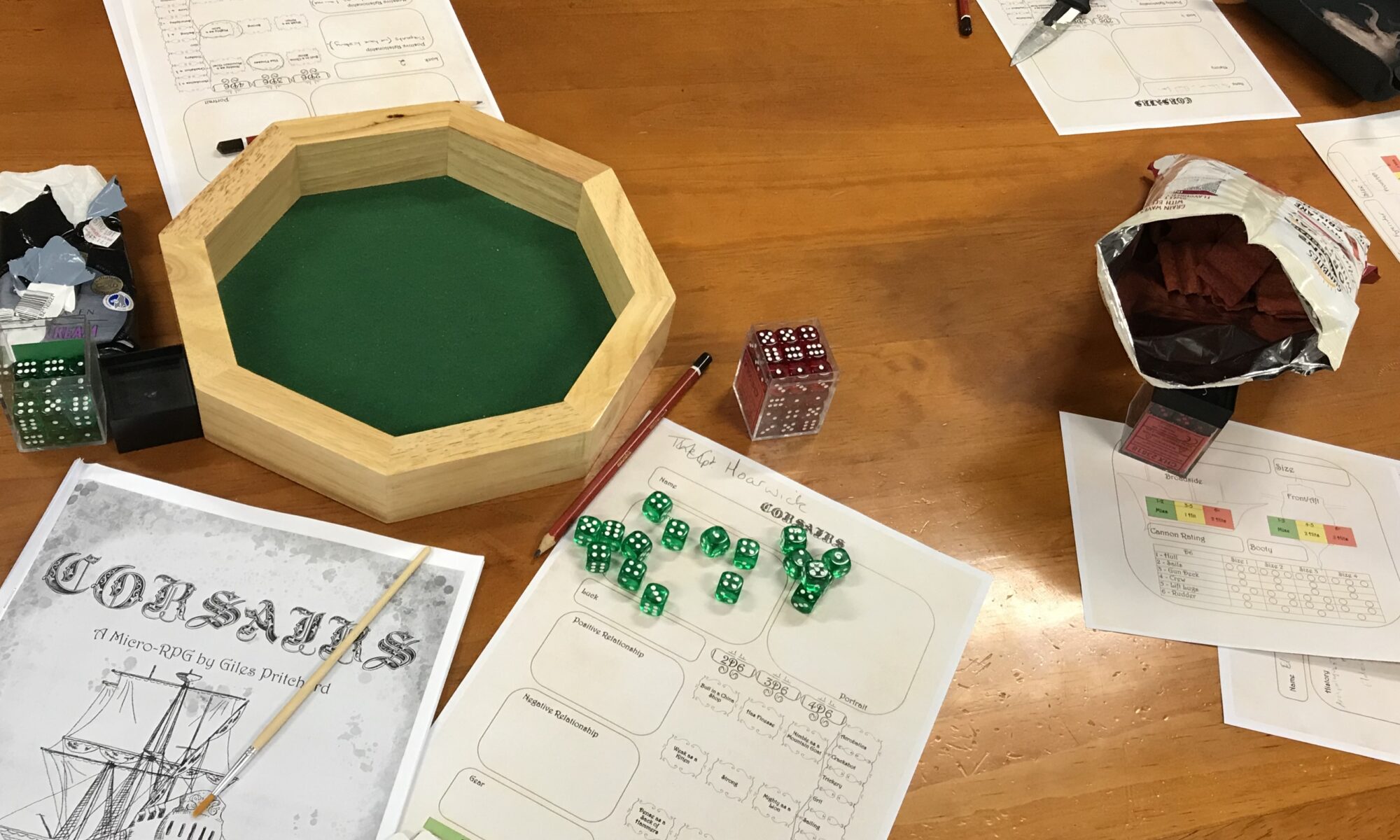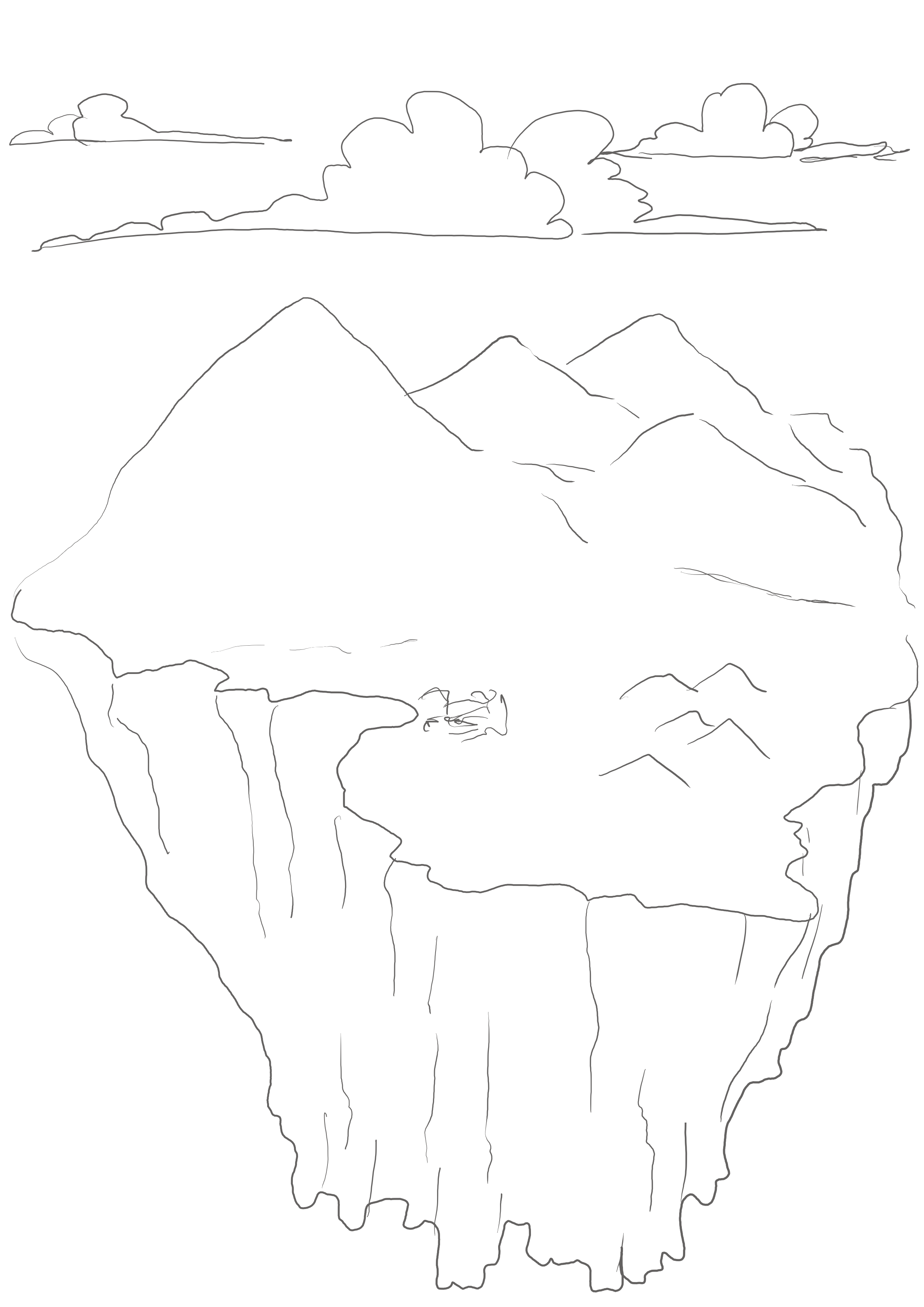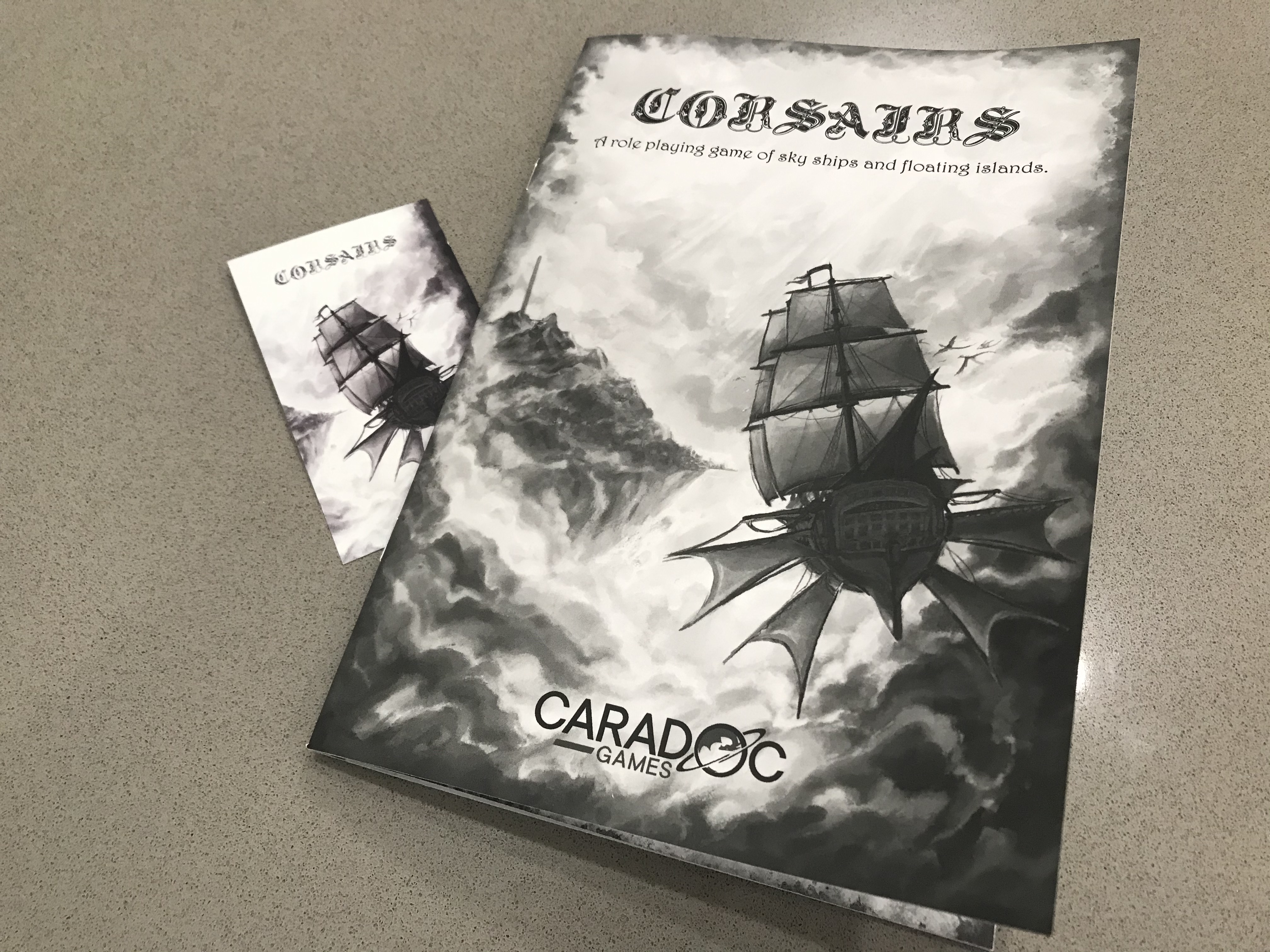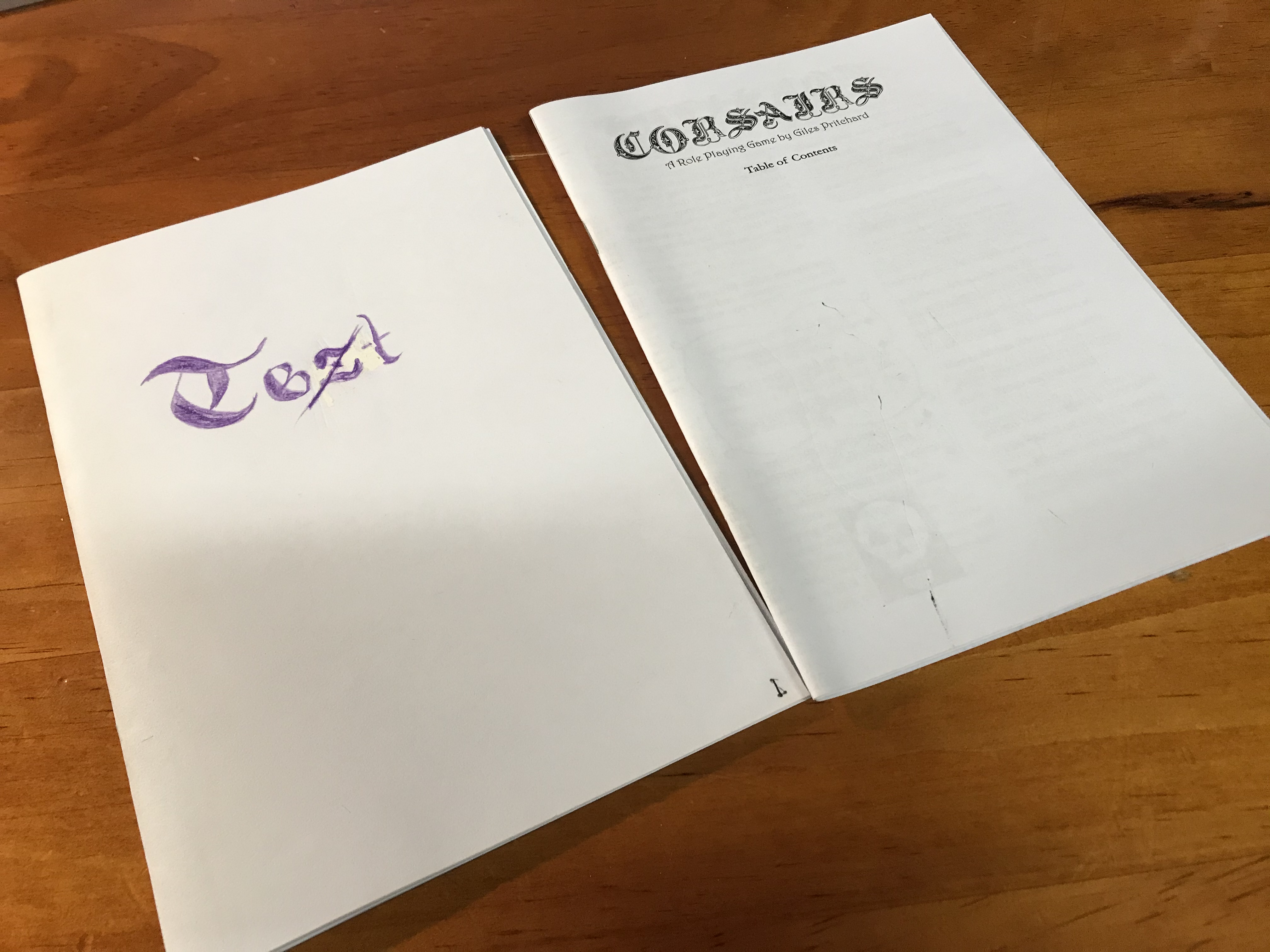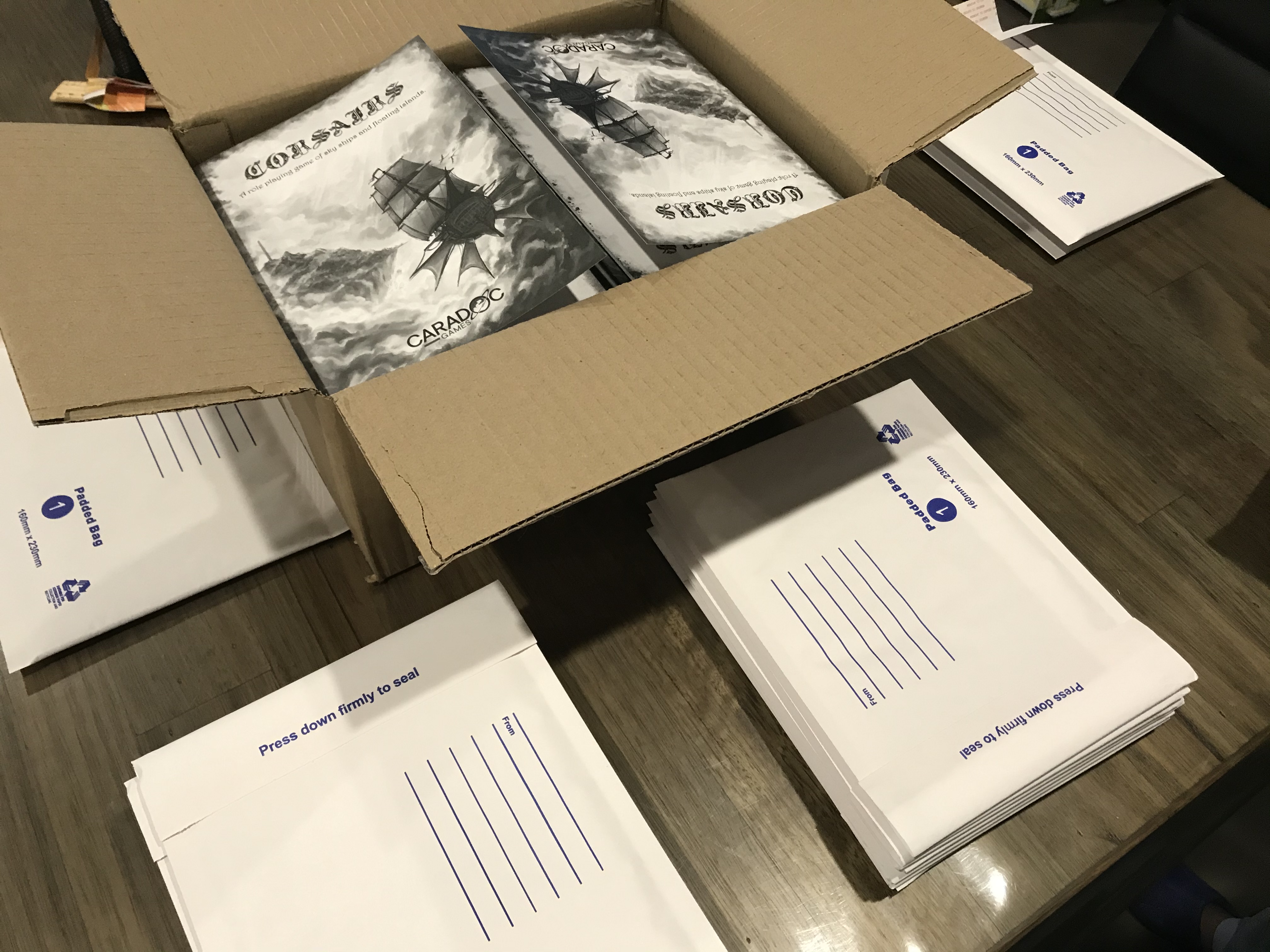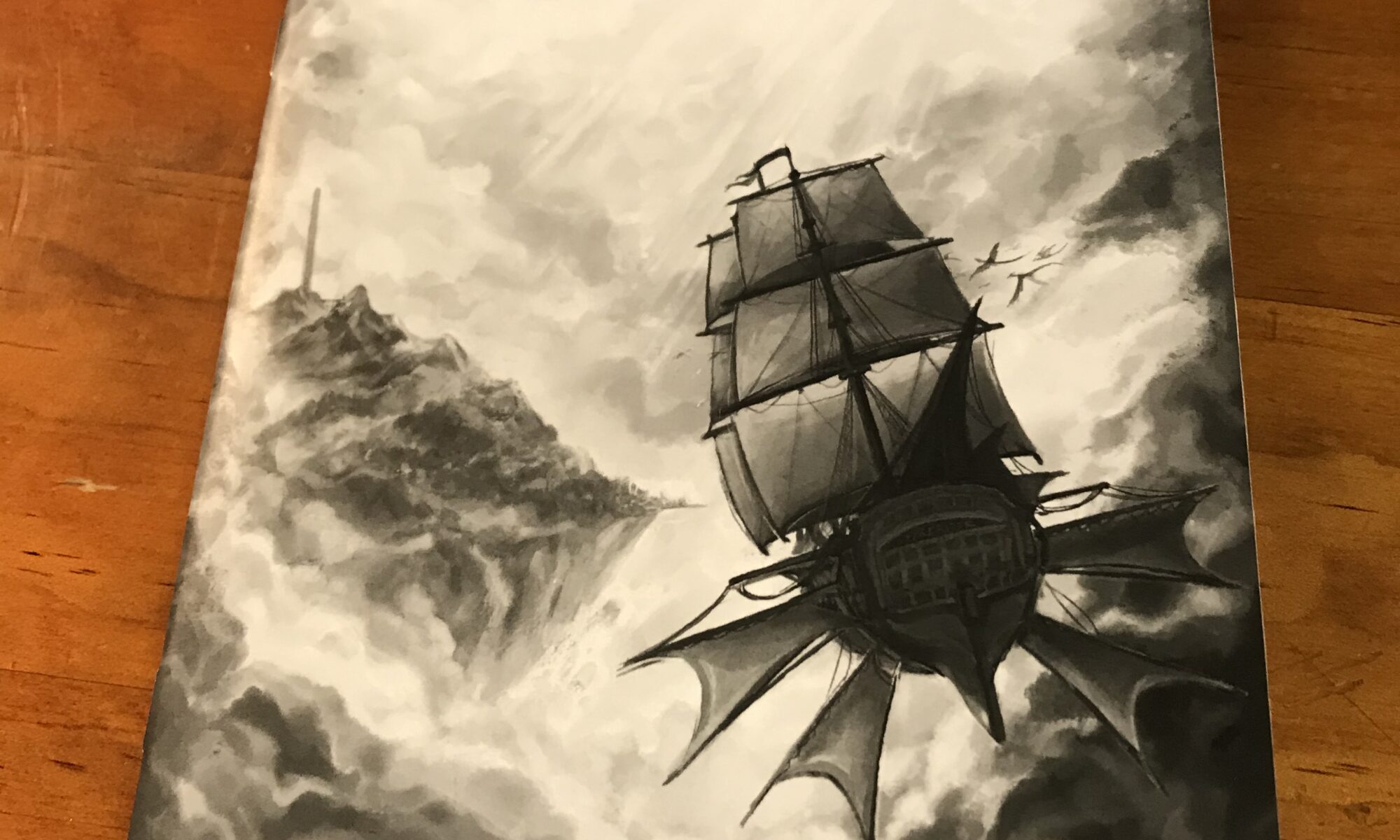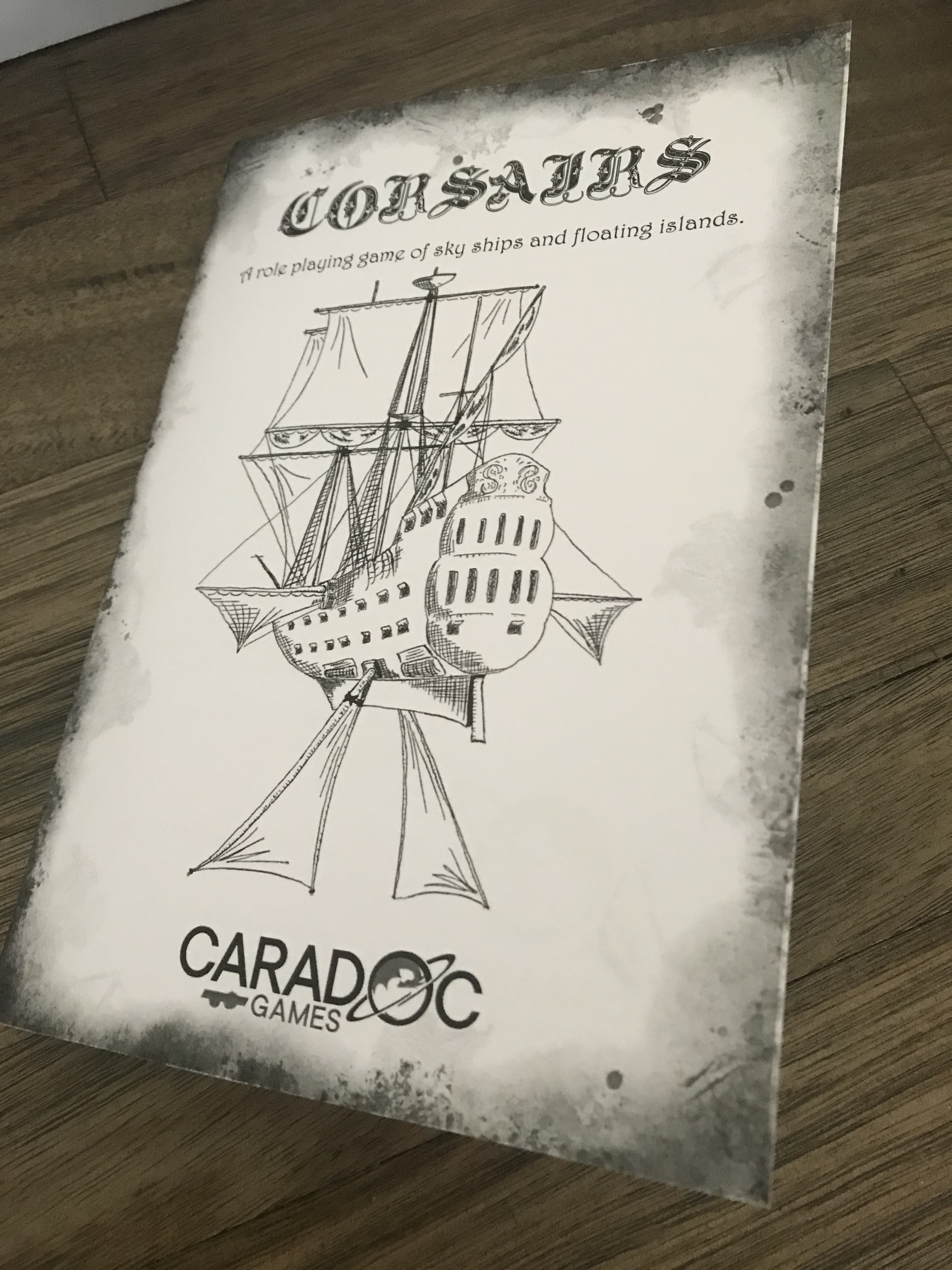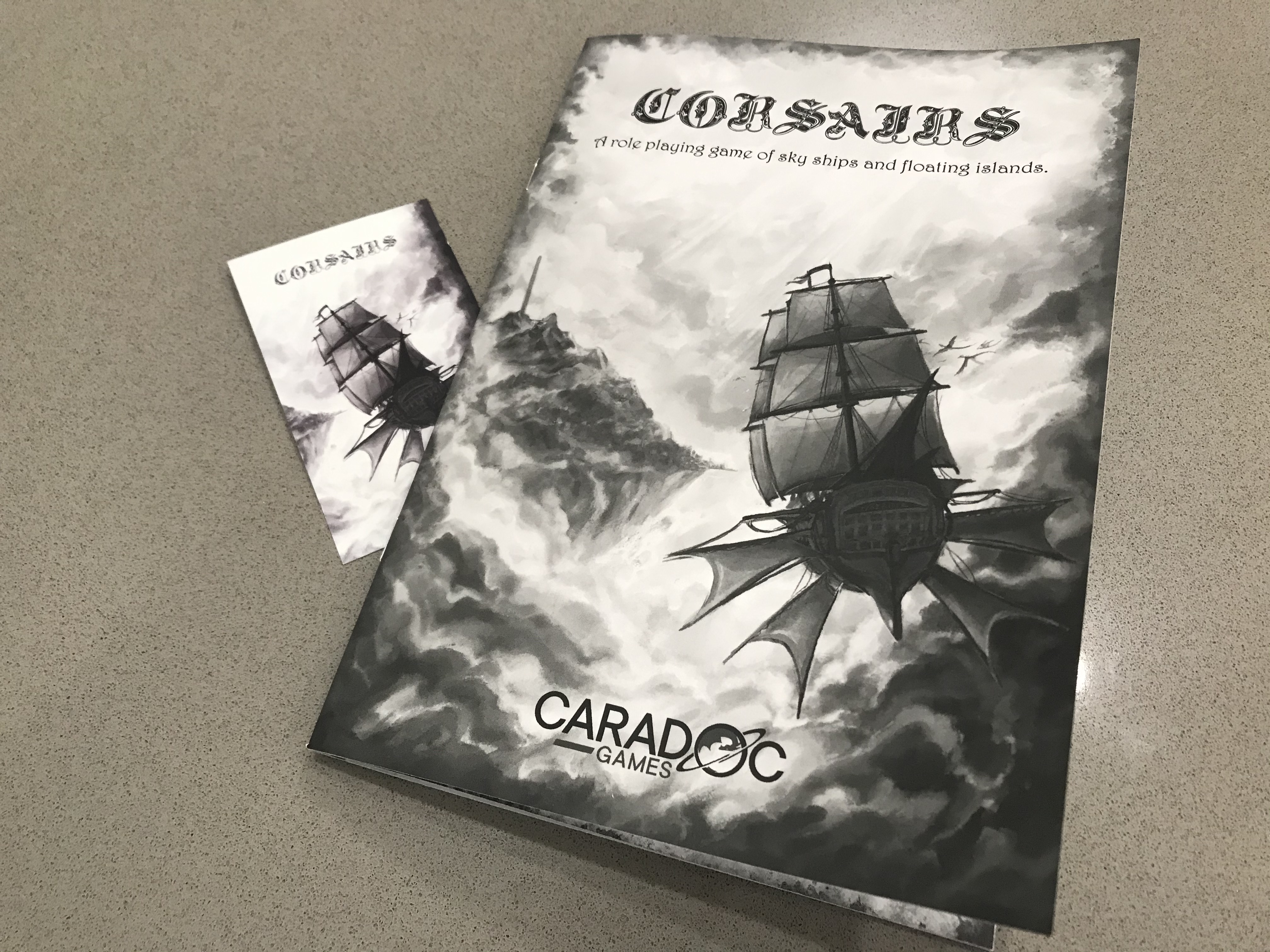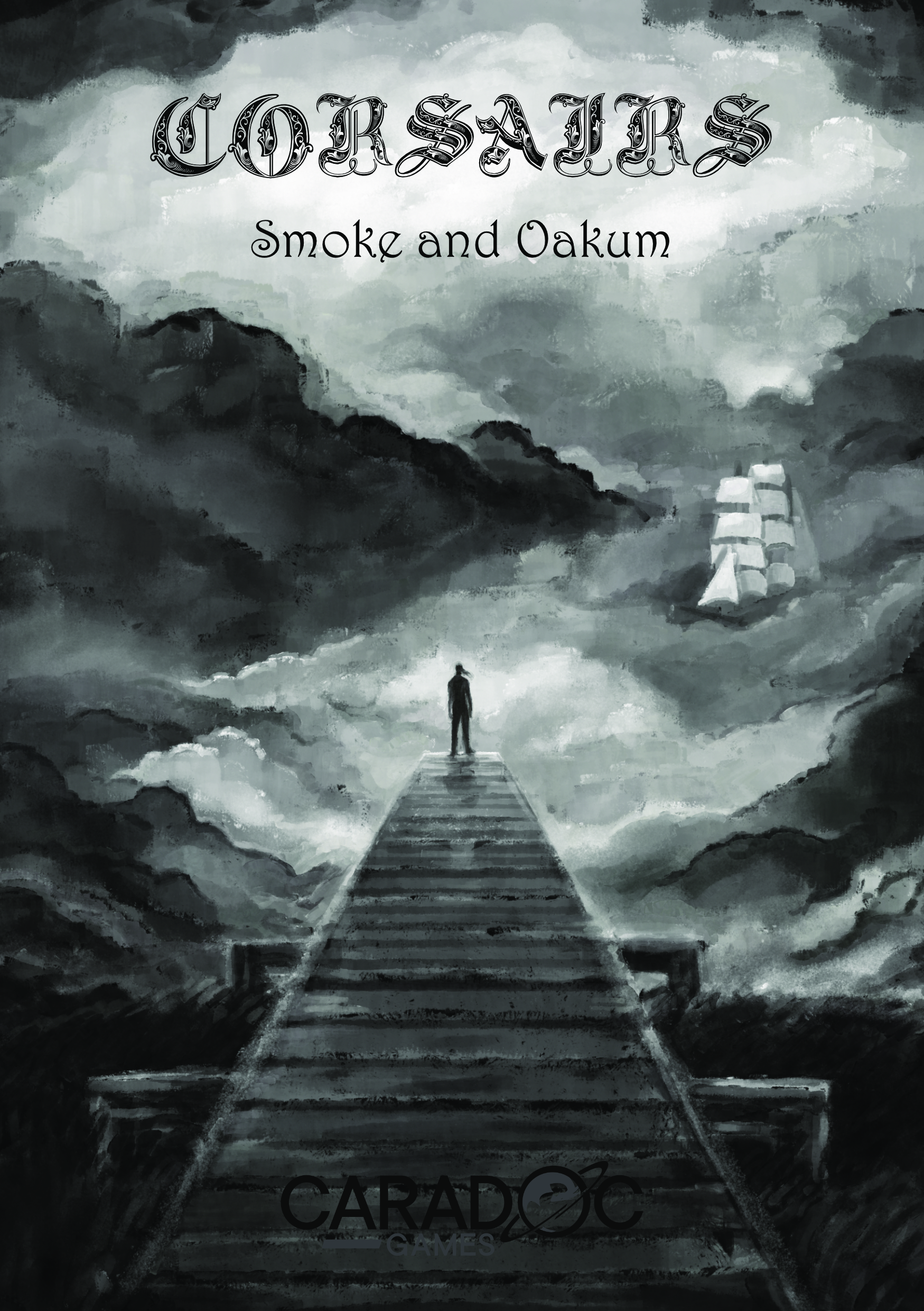One of the things I assumed when creating the Corsairs RPG Kickstarter, is that the digital (PDF) copies would be a more popular option than the physical copies.
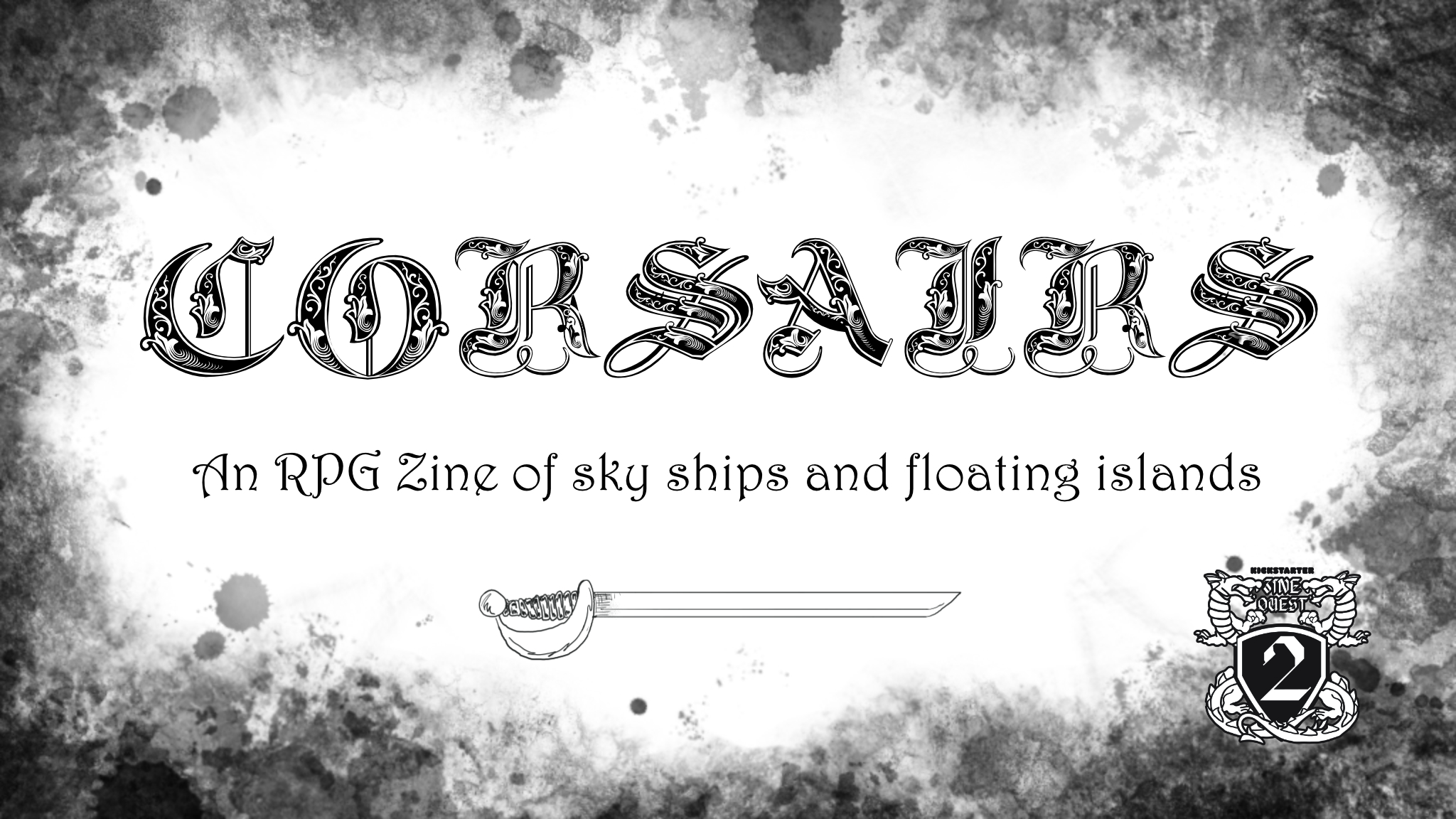
I was wrong.
Nevermind that I was wrong for now… why did I think digital copies would outsell physical copies?
Shipping. In the simplest of terms, the answer was shipping. Shipping is expensive. Shipping from Australia is especially expensive. A couple of posts ago I wrote about the costs of shipping. Last post I wrote about the different backer levels, and the prices I came to for each of those. But to summarise: I had decided that the backer levels would be set at $10 for a digital only copy of Corsairs, and $15 for a physical copy, with the cost of shipping added after the Kickstarter had funded. Now, these prices are in Australian dollars, and so translate well into the US and UK currencies, which I assumed would be my largest sources of backers. Shipping domestically would add a cost of $2, and internationally would add a cost of $8. Bringing the total for a physical copy domestically to $17 AUD, and internationally to $23 AUD. At the end of the day this is a price that is more than double the cost of the PDF. Based on that I would completely understand, and expect, that a majority of international backers would opt for the digital reward level.
Yes, currencies play a key role, and $23 Australian dollars in US dollars or UK pounds is a better proposition (at the time of the Kickstarter it was around $16 USD for the shipping and the physical copy combined). Compared to the cost of the digital backer level, it was more than double. Based on this, I assumed that the digital version would receive more backers than the physical.
INSERT OBLIGATORY PLUG:
If you don’t have a copy of Corsairs you can fix that by heading to DriveThruRPG or Itch.io. If you missed the Kickstarter and are interested in a physical copy of the zine, there are still some physical copies left, contact me at caradocgames@gmail.com for details.
The supplement, Smoke and Oakum, is also available at DriveThruRPG and Itch.io now!
END OBLIGATORY PLUG.
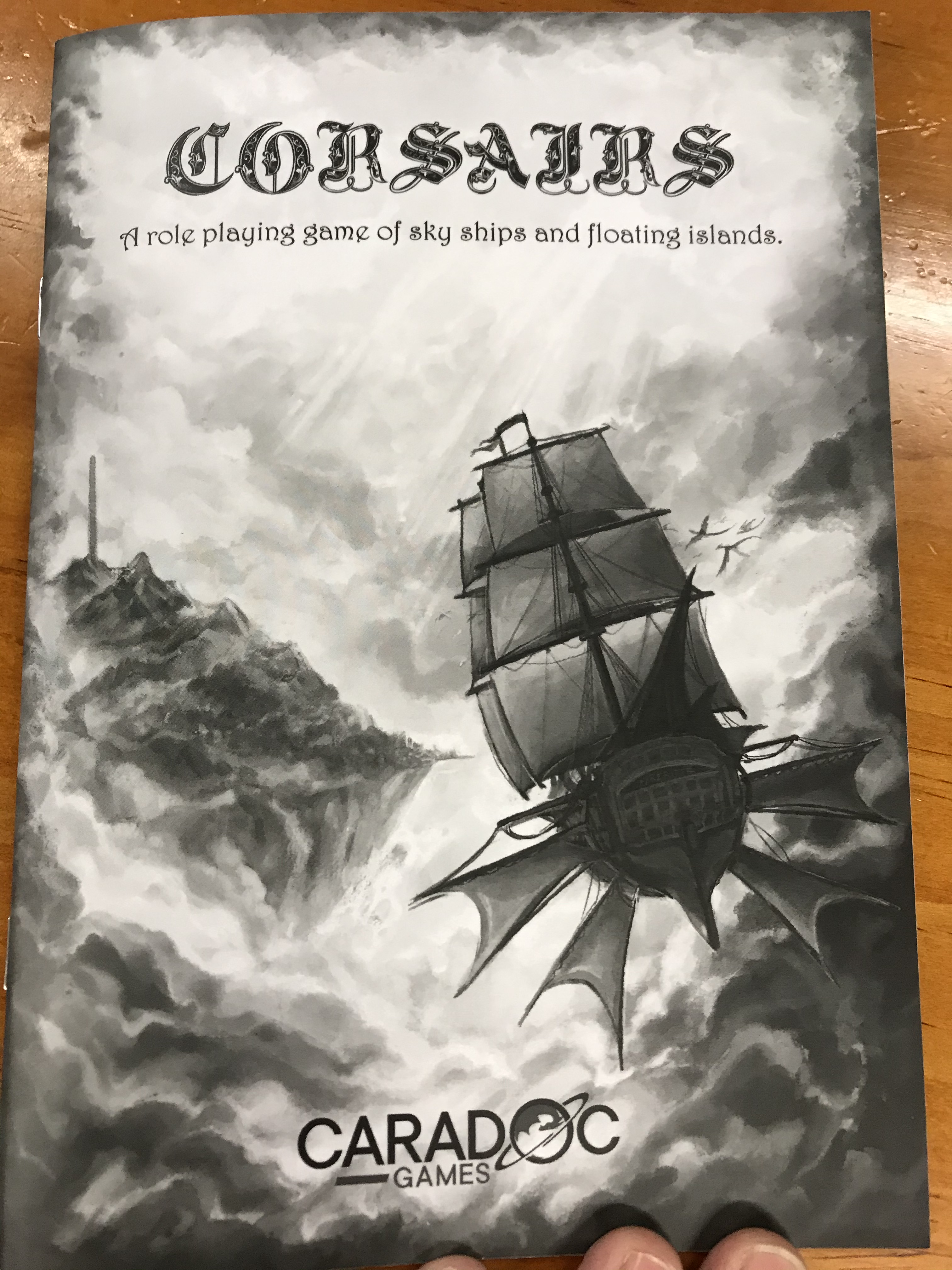
As I wrote above, I was wrong. At the end of the Kickstarter Corsairs had 236 backers, funding at 274% of it’s goal. Of these, 80 backers opted for the digital only level, while 148 opted for the physical level. 63% of backers opted for the physical level, representing 79% of the funding for the project. Compared, only 34% opted for the digital only level, representing 20% of the money raised. With the final percent coming from the few lovely people who backed but opted for no reward.
Interestingly, and annoyingly, the Kickstarter Fulfillment tab gives you the number of backers by country, but no option to filter that by backer level. So I had 236 overall backers, and 148 backers for the physical copy, and the fulfillment tab tells me that 149 of those were in the US (that’s obviously 149 of the 236, not the physical copy). But it’s interesting data nonetheless. Counting by country I had the following:
- US – 149 backers
- Australia – 28 backers.
- UK – 18 backers
- Germany – 10 backers
- And a whole bunch of other countries with 1 or 2 copies, from Spain to the Philippines, from Norway to Puerto Rico.
So… why did people opt for the physical game?
I have no idea. I think the most likely answer is that many people, when they can afford to, prefer to have a physical thing, a manifestation of their pledge, and a book to thumb through. I know personally that I like to have physical copies of the RPGs I own where possible. I can’t explain why, but I prefer reading a physical copy than a digital one, and there is a visceral element that plays a key role as well.
Ok, so what does this mean?
Well, on one hand it’s nothing more than an observation. On the other, I think I would be very hesitant to run a Kickstarter that offered no physical copy. It seems that people like their physical books/zines, and that neglecting that would potentially turn away a number of backers. How many of the 148 backers I had, that opted for a physical copy, would have backed for a digital copy I will never know, but some, perhaps a significant number, would have been lost, of that I am sure.
So the next Kickstarter I run, and there will be one, whether for the next ZineQuest (presuming there is one) or independent of it, I will make sure to include a backing level that is for a physical copy…
This article is a part of a series about running a Kickstarter campaign for ZineQuest, you can find the other articles in this series here.
